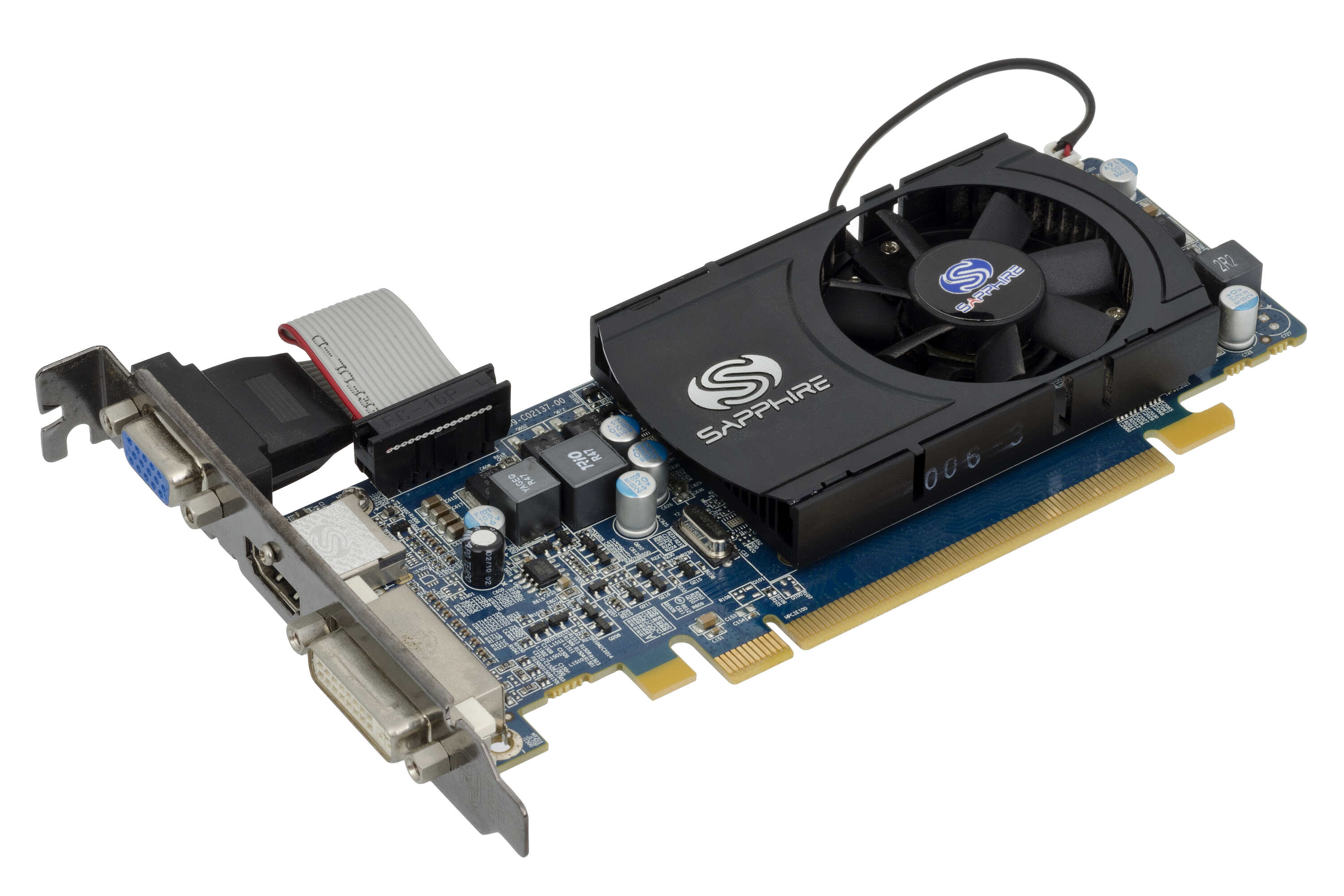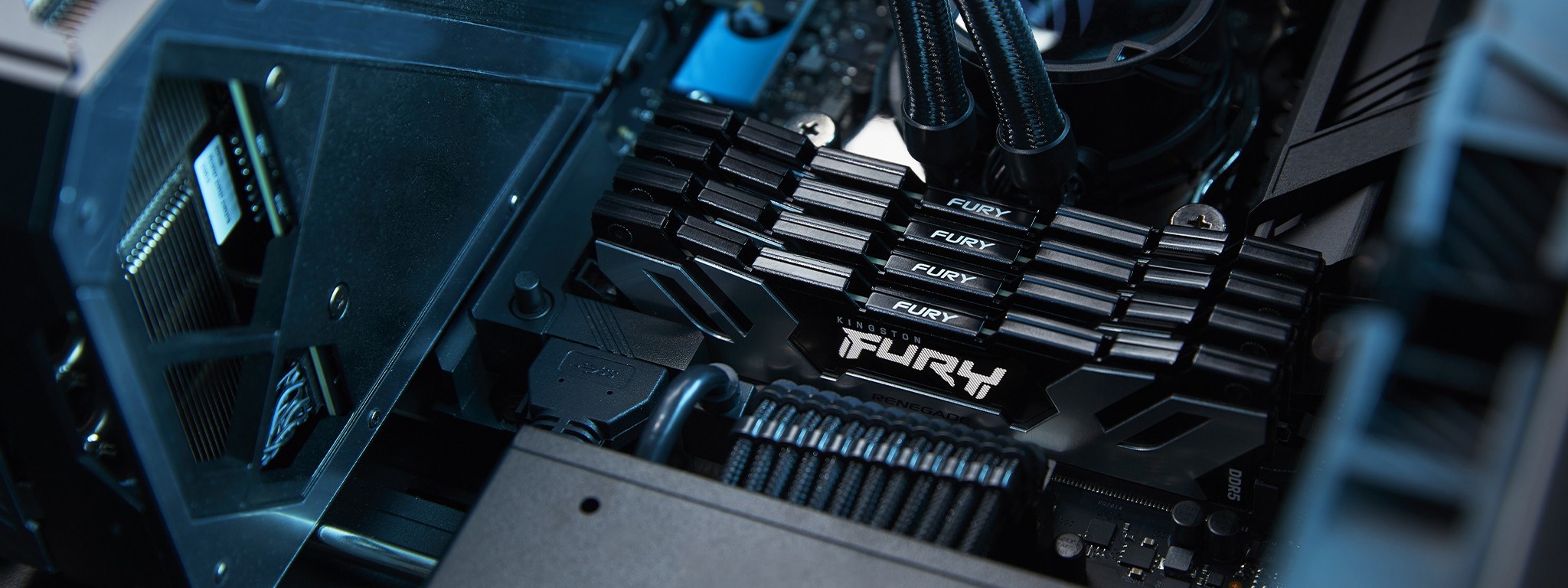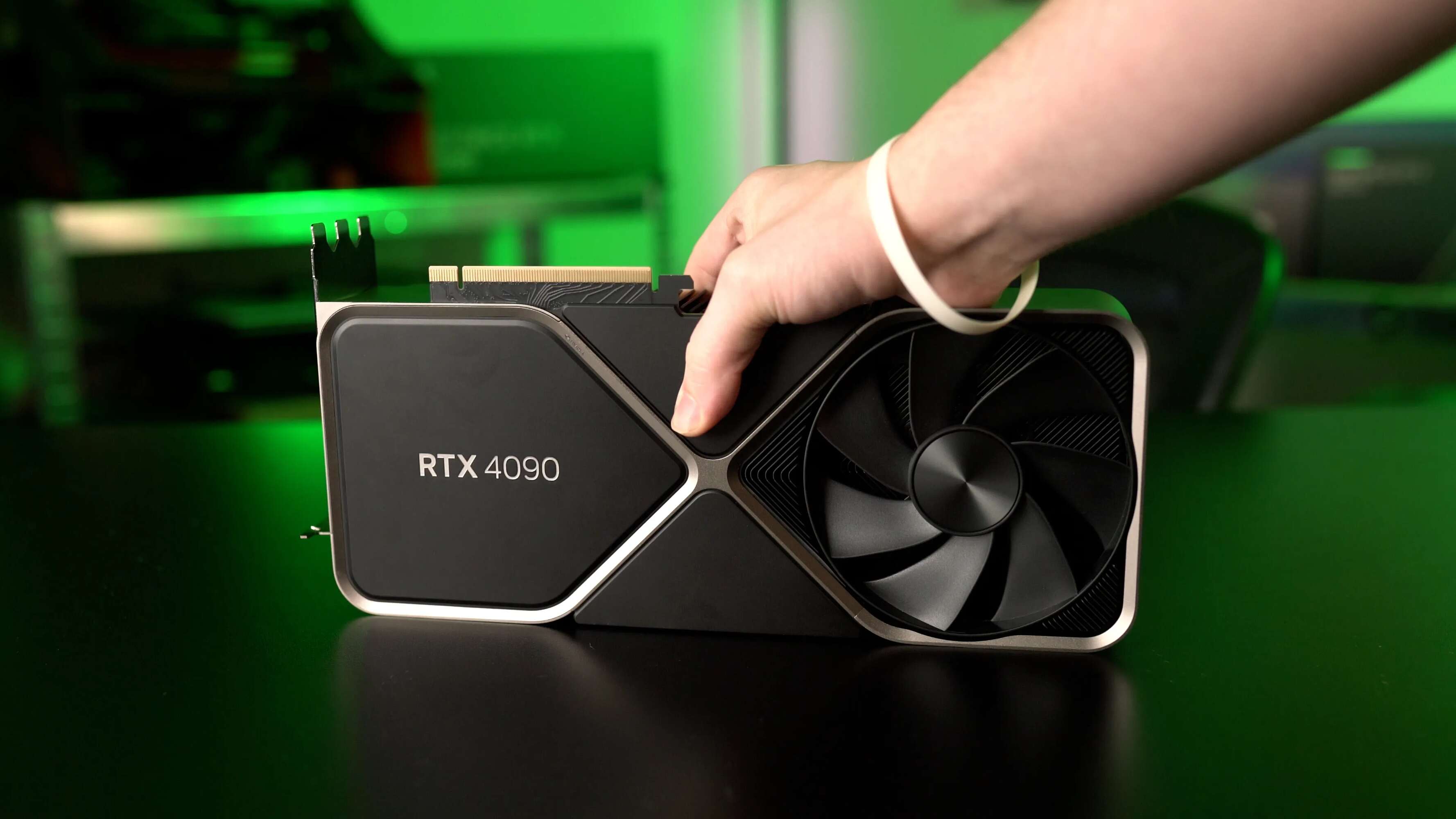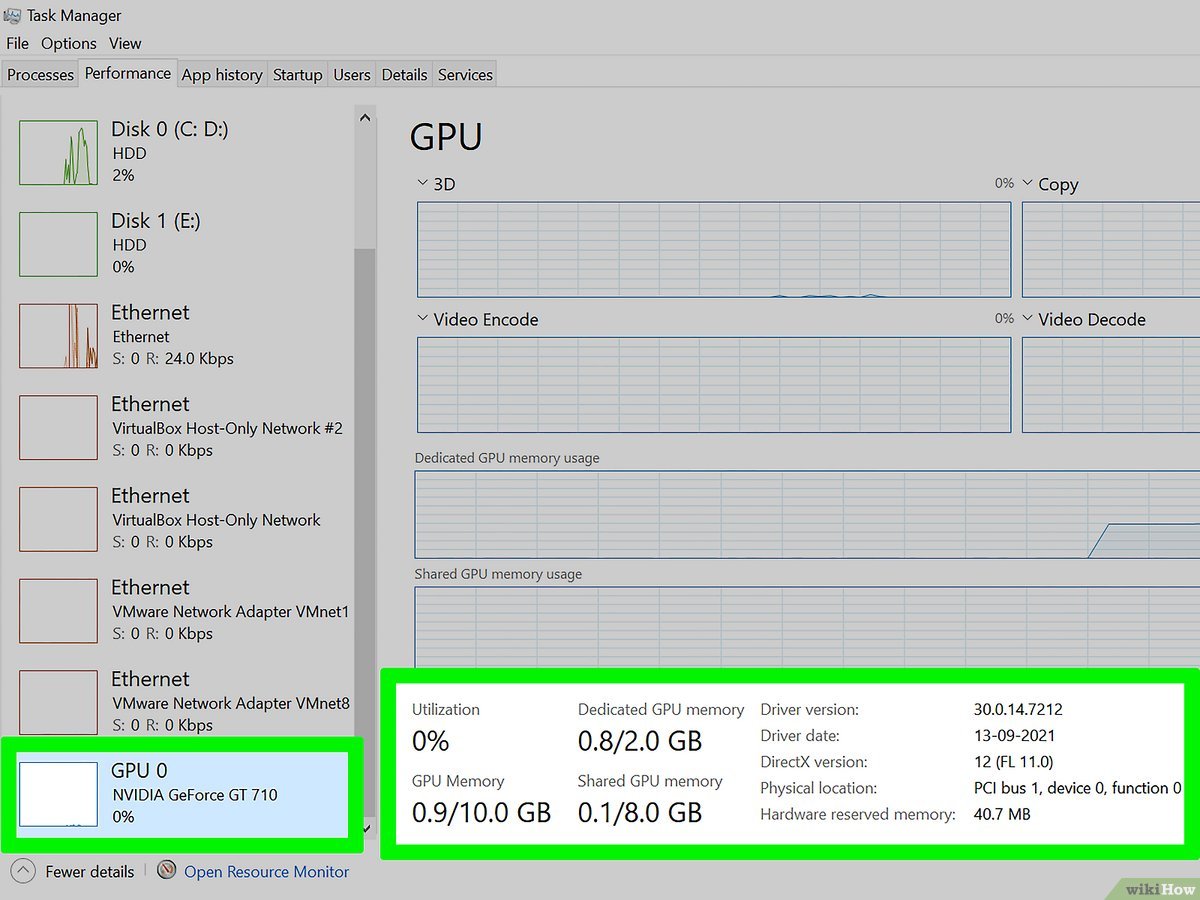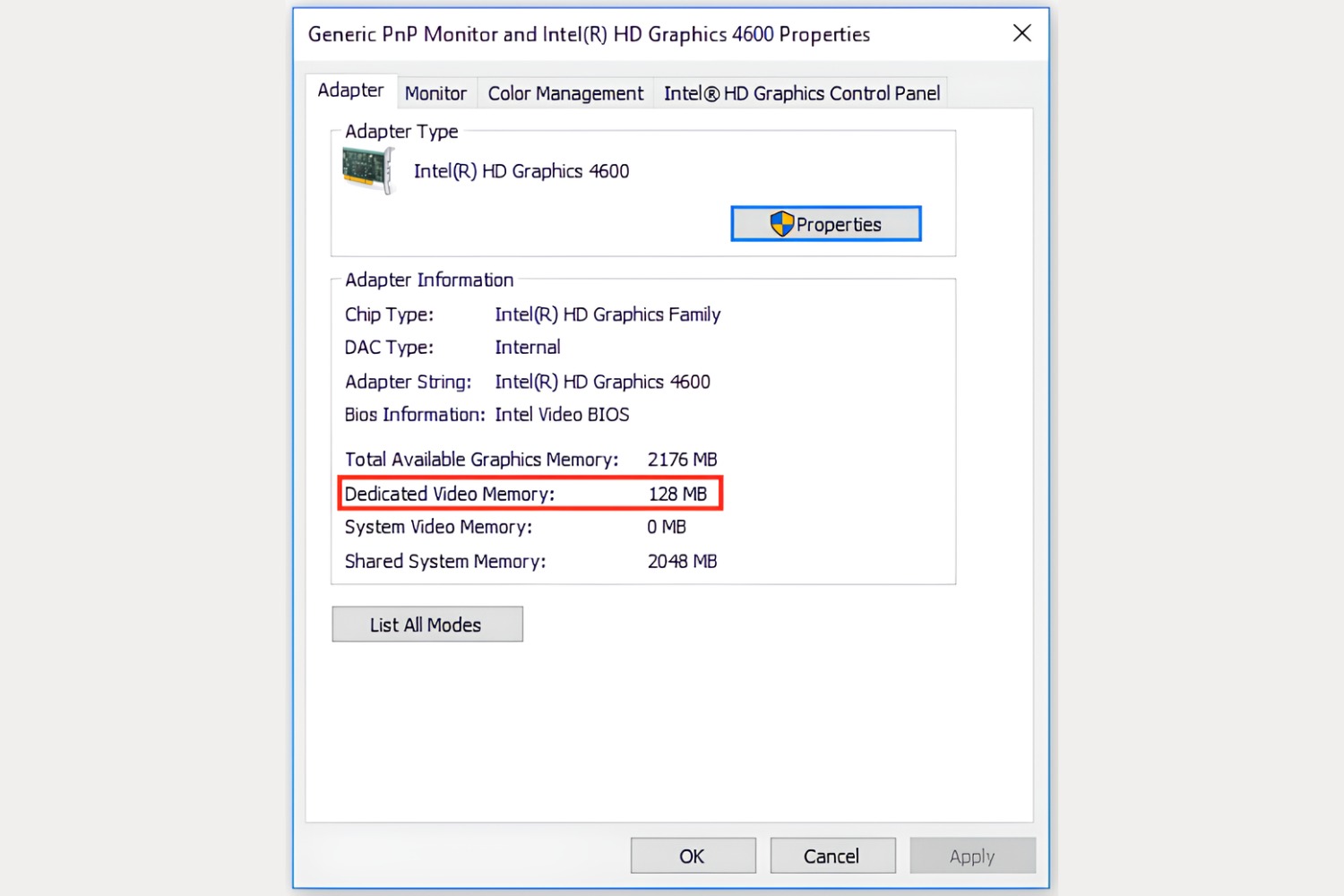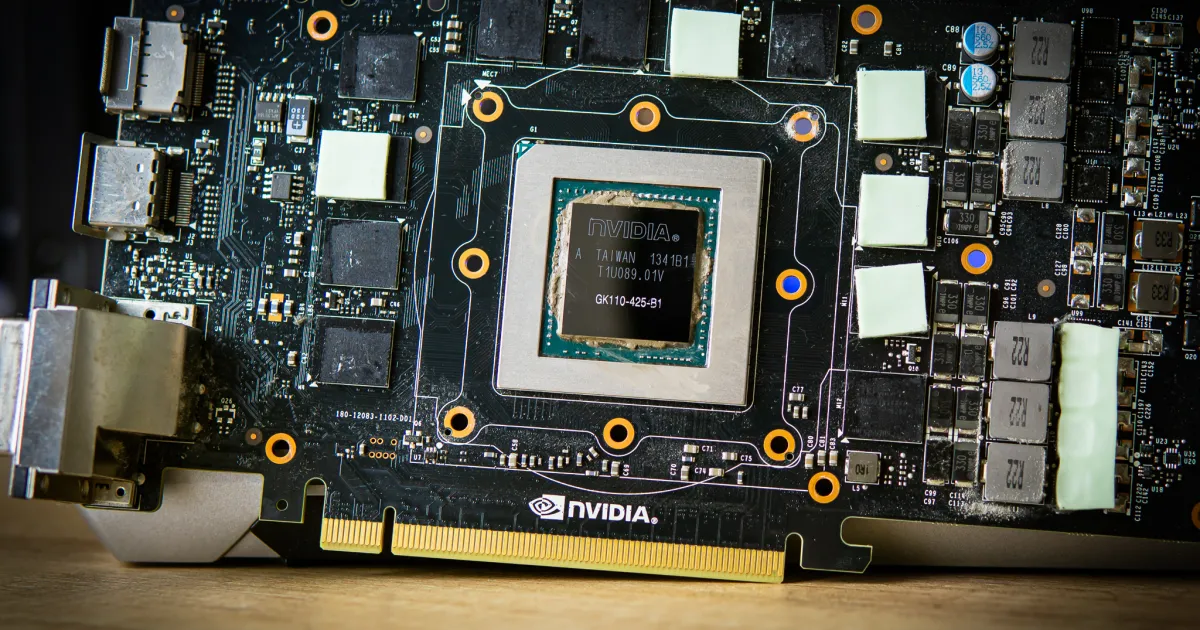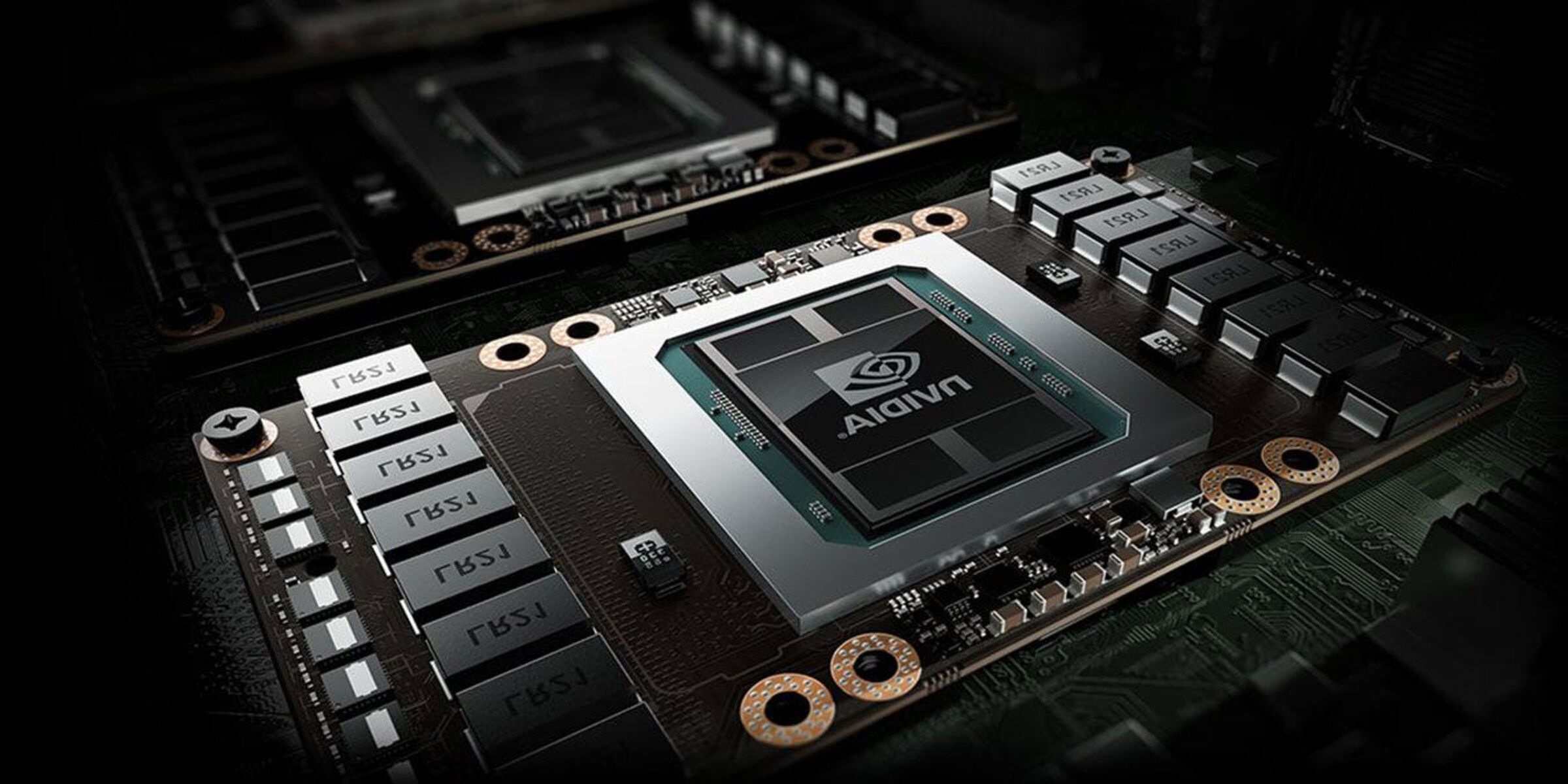Introduction
Welcome to the world of graphics card RAM! If you’re a gaming enthusiast or someone who works with graphics-intensive applications, understanding the importance of graphics card RAM is crucial. Graphics card RAM, or Random Access Memory, plays a vital role in determining the performance and capabilities of your graphics card.
Graphics card RAM refers to the dedicated memory that is used by the GPU (Graphics Processing Unit) to store and quickly access data needed for rendering images, textures, and other visual elements in real-time. It acts as a temporary storage space where the GPU can quickly retrieve and process data to deliver smooth and seamless visuals.
Without sufficient graphics card RAM, your system may experience performance limitations such as lagging, stuttering, and reduced frame rates. This is particularly important when running resource-intensive applications such as high-end games, video editing software, or 3D modeling programs.
When it comes to graphics card RAM, there are different types and specifications to consider. The most common types of graphics card RAM are GDDR5 and GDDR6, which offer varying levels of performance and speed. Additionally, the memory size of a graphics card is another important factor to consider, as it determines how much data can be stored and accessed by the GPU.
In this article, we will delve deeper into the world of graphics card RAM, exploring its importance, different types, memory size considerations, and more. Whether you are a novice or a seasoned tech enthusiast, this guide will help you understand the significance of graphics card RAM and make informed decisions when it comes to choosing, upgrading, or overclocking your graphics card.
So, if you’re ready to dive into the fascinating realm of graphics card RAM, let’s embark on this journey together!
What is Graphics Card RAM?
Graphics Card RAM, also known as Video RAM or VRAM, is a specific type of random access memory (RAM) that is dedicated to the graphics card in a computer system. It serves as the primary storage for the graphics card, allowing it to store and quickly access the data required for rendering visuals on your display.
The role of Graphics Card RAM is to hold and process large amounts of graphical data that are necessary for displaying images, textures, 3D models, and other visual elements in real-time. This includes everything from game textures, lighting effects, particle systems, and even the user interface of your operating system.
Unlike system memory (RAM) which is shared by the CPU and other components in your computer, graphics card RAM is exclusively dedicated to the GPU (Graphics Processing Unit). This dedicated memory ensures that the graphics card has fast and direct access to the data it needs, resulting in better performance and smoother visual outputs.
The speed and bandwidth of the Graphics Card RAM are crucial for graphics-intensive tasks. A faster and higher bandwidth RAM allows the GPU to transfer and process data more efficiently, resulting in improved frame rates, reduced input lag, and overall better graphics performance.
Graphics Card RAM is different from the regular system RAM in terms of architecture and purpose. While system memory is designed for general computing tasks, graphics card RAM is optimized for handling large and complex graphical data. It utilizes specialized memory architectures such as GDDR (Graphics Double Data Rate) to provide higher bandwidth and faster data transfer rates specific to graphics processing.
In addition to its primary role in rendering visuals, Graphics Card RAM also plays a crucial role in other graphics-related tasks such as video encoding, decoding, and image processing. The amount and speed of the VRAM directly affect the capabilities and performance of your graphics card when running graphics-intensive applications.
As technology advances, graphics card manufacturers continue to improve the performance and capacity of graphics card RAM. This allows for more detailed and higher resolution graphics, improved realism in games, and better visual effects in digital content creation.
To summarize, Graphics Card RAM is a specialized form of memory dedicated to the graphics card, storing and processing data required for rendering visuals in real-time. With its faster speed and higher bandwidth, it enhances the performance and capabilities of your graphics card, making it a crucial component for gaming, design, and multimedia applications.
Why is Graphics Card RAM important?
Graphics Card RAM plays a vital role in the overall performance and functionality of a graphics card. Here are several reasons why Graphics Card RAM is important:
1. Enhanced Graphics Performance: The amount and speed of Graphics Card RAM directly impact the performance of your graphics card. With more VRAM, the GPU can store and access larger amounts of graphical data, resulting in smoother gameplay, reduced stuttering, and improved frame rates. This is especially important for running graphics-intensive applications and high-resolution games.
2. Seamless Multitasking: Having sufficient Graphics Card RAM allows you to handle multiple tasks simultaneously without sacrificing performance. This is particularly important for tasks that require heavy graphics processing, such as gaming while streaming or video editing. Having enough VRAM ensures that your system can handle the demands of these tasks without experiencing lag or slowdowns.
3. Higher Texture Quality: Graphics Card RAM is responsible for storing and rendering textures in real-time. With more VRAM, the GPU can store larger and more detailed textures, resulting in improved texture quality and visual fidelity. This can have a significant impact on the overall realism and immersion in games and other graphical applications.
4. Better Visual Effects: Many modern games and applications utilize complex visual effects such as dynamic lighting, shadows, and particle systems. These effects require a significant amount of Graphics Card RAM to store and process the necessary data. Having sufficient VRAM allows the GPU to handle these effects smoothly, resulting in a more visually stunning and immersive experience.
5. Compatibility with Higher Resolution Displays: As display technology advances, higher resolution monitors and displays become more common. These higher resolution displays require more VRAM to handle the increased number of pixels. Insufficient Graphics Card RAM may result in graphical artifacts, reduced performance, or inability to output at the desired resolution.
6. Future-Proofing: Investing in a graphics card with ample VRAM can help future-proof your system, ensuring that it can handle upcoming games and applications that may have increased memory requirements. As graphics and software technology continues to evolve, having enough VRAM ensures that your system can handle the demands of future graphical advancements.
7. Advanced GPU Features: Graphics Card RAM enables the use of advanced GPU features such as anti-aliasing, anisotropic filtering, and real-time ray tracing. These features enhance the visual quality and realism of graphics, but they also require additional VRAM to function optimally. Sufficient RAM allows you to utilize these advanced features without sacrificing performance.
Overall, Graphics Card RAM is vital for delivering high-performance graphics, smooth gameplay, and immersive visual experiences. It plays a crucial role in handling graphical data, textures, effects, and resolutions, making it an essential consideration when choosing a graphics card for gaming, creative work, or any graphics-intensive tasks.
Types of Graphics Card RAM
When it comes to Graphics Card RAM, there are several types available, each offering different performance characteristics and capabilities. Let’s take a closer look at the most common types of Graphics Card RAM:
1. GDDR5 (Graphics Double Data Rate 5): GDDR5 is one of the most widely used types of Graphics Card RAM. It offers a good balance between performance and cost-effectiveness. GDDR5 provides high memory bandwidth and can handle the demands of many modern games and applications. While it may not be as fast as the newer GDDR6, it still provides excellent performance for most gamers and multimedia enthusiasts.
2. GDDR6 (Graphics Double Data Rate 6): GDDR6 is the successor to GDDR5 and offers significant improvements in performance and data transfer rates. It provides higher memory bandwidth, allowing for faster communication between the GPU and memory. With GDDR6, you can expect better overall performance, improved visual quality, and enhanced gaming experiences. GDDR6 is commonly found in high-end graphics cards and is ideal for gaming at higher resolutions and frame rates.
3. GDDR6X (Graphics Double Data Rate 6X): GDDR6X is a further enhancement of GDDR6 memory technology. It offers even higher memory bandwidth compared to GDDR6, making it suitable for the most demanding gaming and content creation tasks. GDDR6X is commonly found in top-tier graphics cards and delivers exceptional performance for gamers and professionals who require the best of the best.
4. HBM (High Bandwidth Memory): HBM is a high-performance memory technology used in certain graphics cards. Instead of the traditional GDDR memory, HBM stacks multiple memory layers vertically, resulting in significantly higher memory bandwidth. This allows for faster data transfer and improved performance. HBM is commonly found in high-end graphics cards and is especially beneficial for applications that require massive amounts of data to be processed rapidly, such as AI computing or professional graphics workstations.
5. HBM2 (High Bandwidth Memory 2): HBM2 is the second generation of HBM memory technology. It offers higher memory capacity and bandwidth compared to its predecessor, allowing for even more improved performance. HBM2 is commonly used in high-end graphics cards and computing systems that demand exceptional memory performance, such as virtual reality (VR) applications or deep learning.
It’s important to note that the type of Graphics Card RAM supported by your system will depend on the specific graphics card you have, as well as the motherboard’s compatibility. When choosing a graphics card, it’s essential to consider the type and capabilities of the Graphics Card RAM, as it will directly impact the performance and capabilities of your gaming or graphics-intensive applications.
Understanding the different types of Graphics Card RAM can help you make an informed decision when selecting a graphics card that meets your specific needs and budget. Whether you’re a casual gamer, a content creator, or a professional, choosing the right type of Graphics Card RAM is crucial for achieving optimal performance in your graphics-intensive tasks.
GDDR5 vs GDDR6: Which is better?
When it comes to Graphics Card RAM, GDDR5 and GDDR6 are two popular choices in the market. While both offer excellent performance, there are distinct differences between the two. Let’s compare GDDR5 and GDDR6 to determine which is better for your needs:
Memory Bandwidth: GDDR6 has higher memory bandwidth compared to GDDR5. This means that it can transfer data at a faster rate between the GPU and memory, resulting in improved overall performance. If you’re looking for a graphics card that can handle high-resolution gaming or demanding graphic workloads, GDDR6 can provide a significant edge in terms of memory bandwidth.
Data Transfer Speed: GDDR6 boasts faster data transfer speeds compared to GDDR5. This increased speed allows for quicker access to data stored in the graphics card RAM, resulting in faster loading times, smoother gameplay, and improved frame rates. If you’re a gamer seeking a buttery-smooth gaming experience or a professional working with large and complex graphical models, GDDR6 can deliver the required data transfer speeds.
Power Efficiency: GDDR6 memory technology is more power-efficient compared to GDDR5. It requires less operating voltage and reduces power consumption, leading to improved energy efficiency. This can be beneficial for users looking to build a more power-efficient system or for those concerned about energy consumption.
Cost: GDDR5 is generally more cost-effective compared to GDDR6. As GDDR6 is a newer technology with improved performance, it tends to come at a higher price point. If you’re on a tight budget or don’t require the absolute highest performance, GDDR5 can provide a good balance between performance and affordability.
Compatibility: GDDR5 is a widely supported and established memory technology in the market. It is compatible with a wide range of graphics cards, making it easier to find options that suit your specific needs. GDDR6, on the other hand, is still relatively new and may have limited compatibility depending on the specific graphics card model.
Future-Proofing: If you’re planning for the future and want a graphics card that can handle upcoming games and applications, GDDR6 is a better choice. It offers improved performance and higher memory bandwidth, making it more suitable for upcoming graphics-intensive tasks and technologies.
Ultimately, the choice between GDDR5 and GDDR6 depends on your specific requirements, budget, and future plans. If you’re a casual gamer or use your graphics card for everyday tasks, GDDR5 can provide the necessary performance at a more affordable price. On the other hand, if you’re a hardcore gamer, content creator, or professional in need of top-tier performance, GDDR6 is the better option with its higher memory bandwidth and faster data transfer speeds.
It’s important to evaluate your needs and research specific graphics cards to determine which memory technology aligns best with your requirements. Consider factors such as the games or applications you use, the resolution you play or work at, and any future upgrades you may have in mind for a well-informed decision.
Understanding Graphics Card Memory Size
Graphics card memory size refers to the amount of dedicated memory that a graphics card has for storing and accessing data needed for rendering visuals. It plays a significant role in determining the graphics card’s capabilities and overall performance. Here are some key points to help you understand graphics card memory size:
1. Memory Capacity: The memory size of a graphics card is measured in gigabytes (GB). Common memory capacities for graphics cards range from 2GB to 16GB or more. The larger the memory size, the more data the graphics card can store, allowing for smoother performance when handling complex graphical tasks.
2. Texture Rendering: Graphics card memory plays a crucial role in texture rendering. Textures are essential for creating realistic visuals in games and other graphical applications. A larger memory size enables the graphics card to store a greater number of high-resolution textures, resulting in better detail and visual quality.
3. High-Resolution Gaming: As the resolution of games increases, so does the demand for graphics card memory. Higher resolutions require more memory to store the additional pixels and textures. If you plan to game at higher resolutions, such as 1440p or 4K, it’s recommended to opt for a graphics card with a larger memory size to ensure smooth performance and visual fidelity.
4. Multi-Monitor Setup: If you use a multi-monitor setup for tasks like multitasking, content creation, or gaming, having a graphics card with ample memory is essential. Each monitor requires its own memory allocation, and a larger memory size allows for smooth rendering across multiple displays, preventing performance issues, and minimizing lag.
5. VR and 3D Applications: Virtual Reality (VR) and 3D applications require significant graphics card memory for seamless performance. These applications often utilize complex environments, high-resolution textures, and detailed models, which can quickly consume memory. An adequate memory size ensures that the graphics card can handle the demands of VR and 3D applications, providing a smooth and immersive experience.
6. Future-Proofing: Considering the future is important when selecting the memory size for your graphics card. Graphics-intensive applications and games continue to evolve, demanding more memory for optimal performance. Choosing a graphics card with a larger memory size provides better longevity and ensures compatibility with upcoming software that may require increased memory capacity.
7. Budget Considerations: It’s important to find a balance between your performance requirements and budget. While larger memory sizes offer benefits, they also come at a higher cost. Assess your specific needs and determine the memory size that aligns with your requirements and budgetary constraints.
Understanding the significance of graphics card memory size allows you to make informed decisions when selecting a graphics card for your specific needs. Consider factors such as gaming resolutions, multi-monitor setups, VR capabilities, and future-proofing to ensure you choose a graphics card with the appropriate memory size to deliver the desired performance and visual experience.
How much Graphics Card RAM do you need?
When determining the amount of graphics card memory (VRAM) you need, several factors come into play. Here are some considerations to help you decide:
1. Gaming Requirements: The amount of VRAM required for gaming depends on the resolution you play at and the complexity of the games you play. Lower resolutions, such as 1080p, generally require less VRAM, while higher resolutions like 1440p or 4K demand more VRAM for smooth performance. Similarly, graphics-intensive games with detailed textures and effects benefit from more VRAM. Check the recommended system requirements for the games you play most often to get an idea of the VRAM they require.
2. Multi-Monitor Setup: If you use a multi-monitor setup for gaming or productivity, consider the increased VRAM demands. Each additional monitor requires additional VRAM for rendering visuals smoothly across multiple displays. High-resolution monitors also require more VRAM to handle the increased pixel count. If you have multiple monitors or use high-resolution displays, a graphics card with more VRAM is recommended.
3. Content Creation and Design Work: If you work with graphic design, video editing, 3D modeling, or other content creation tasks, more VRAM can improve performance and rendering speeds. These applications often involve handling large files, complex models, and high-resolution textures. Adequate VRAM ensures smooth performance and minimizes lag when working with these resource-intensive applications.
4. Future-Proofing: Consider the future when determining your VRAM needs. As technology advances, games and applications typically become more demanding, requiring more VRAM for optimal performance. Investing in a graphics card with ample VRAM ensures compatibility with future software releases and helps extend the lifespan of your system.
5. Software Requirements: Some software, such as professional design applications or scientific simulations, may have specific VRAM requirements. Check the recommended system requirements of the software you plan to use to ensure your graphics card meets those specifications. This is especially important if you work in specialized fields where software demands vary.
6. Budget Considerations: Finally, factor in your budget. While more VRAM generally improves performance, it does come at a higher price. It’s essential to find a balance between your performance needs and budget constraints. Consider the most demanding tasks you’ll be performing and prioritize VRAM allocation accordingly.
It’s important to note that more VRAM doesn’t always mean improved performance. If your system has more VRAM than necessary for your tasks, it may not yield any noticeable benefits. It’s crucial to match your VRAM needs with the demands of your applications and games effectively.
In summary, the amount of VRAM you need depends on factors such as gaming requirements, multi-monitor setups, content creation needs, future-proofing, software demands, and budget considerations. Evaluate your specific needs and prioritize the tasks that require the most VRAM, ensuring that your graphics card provides smooth performance and optimal visual experience for your chosen applications and games.
Gaming Performance and Graphics Card RAM
When it comes to gaming, the amount of Graphics Card RAM (VRAM) can significantly impact performance and the overall gaming experience. Here’s a closer look at how Graphics Card RAM affects gaming performance:
Texture Quality and Detail: Higher VRAM capacity allows for better texture quality and detail in games. Games with high-resolution textures and detailed environments benefit from larger VRAM, as it enables the graphics card to store and access the necessary textures, resulting in more realistic and immersive visuals. With ample VRAM, you can enjoy games with sharper textures and intricate details, enhancing your overall gaming experience.
Stable Frame Rates and Reduced Stuttering: In graphics-intensive games, insufficient VRAM can result in stuttering and frame rate drops. When the graphics card runs out of VRAM, it needs to resort to slower system memory, leading to performance hiccups. Adequate VRAM ensures that the graphics card has enough memory to store and quickly access the data it needs, resulting in stable frame rates and smoother gameplay.
Higher Resolutions and Multi-Monitor Gaming: If you game at higher resolutions like 1440p or 4K, or utilize a multi-monitor setup, more VRAM becomes crucial. Higher resolutions require larger frame buffers to hold the increased number of pixels, while multi-monitor gaming requires additional VRAM to handle the rendering across multiple displays. Insufficient VRAM for these setups can result in reduced performance and visual artifacts.
VR Gaming: Virtual Reality (VR) gaming places additional demands on the graphics card, including the need for more VRAM. VR games often require higher-resolution rendering to maintain image quality, along with additional processing for head tracking, environment rendering, and dynamic effects. Adequate VRAM ensures smooth and immersive VR gaming experiences, preventing lag and graphical glitches.
Modding and Enthusiast Settings: If you enjoy modding games or using enthusiast settings, such as higher levels of anti-aliasing or more demanding graphical effects, more VRAM is beneficial. These settings require additional VRAM to operate smoothly and maintain high frame rates. Without enough VRAM, performance may suffer, leading to reduced visual quality or even crashes in some cases.
Futureproofing: As game graphics continue to advance, they require more VRAM for optimal performance. Investing in a graphics card with ample VRAM helps futureproof your gaming setup, ensuring compatibility with upcoming games and preventing the need for frequent upgrades. A higher VRAM capacity allows you to run newer games at higher settings without sacrificing performance.
It’s important to note that VRAM alone doesn’t guarantee better performance. Other factors, such as the GPU’s processing power, memory bandwidth, and overall system configuration, also impact gaming performance. However, having sufficient VRAM is crucial for unlocking the full potential of your graphics card and ensuring smooth, immersive gameplay with high-quality visuals.
In summary, a graphics card with ample VRAM is essential for delivering optimal gaming performance. It improves texture quality, reduces stuttering, enables gaming at higher resolutions and multi-monitor setups, enhances VR experiences, supports enthusiast settings, and helps futureproof your gaming setup. Consider your gaming requirements and the demands of the games you play when choosing a graphics card with an appropriate VRAM capacity for the best gaming experience.
Overclocking Graphics Card RAM
Overclocking your Graphics Card RAM (VRAM) is a method used to increase the operating speed of the memory beyond its default settings. This can lead to improved gaming performance and can be an effective way to squeeze out extra power from your graphics card. Here’s what you need to know about overclocking your Graphics Card RAM:
Increased Performance: Overclocking your VRAM can result in increased performance in games and graphics-intensive applications. By pushing the memory clock speed beyond its default settings, you can achieve higher frame rates, reduced latency, and smoother gameplay. This can be particularly beneficial for gamers looking for that extra edge or those involved in content creation tasks that require fast and efficient memory performance.
Improved Texture Loading and Rendering: Overclocking your VRAM can enhance texture loading and rendering speeds. Games that heavily rely on high-resolution textures can see significant improvements in texture quality and detail when the VRAM is overclocked. Faster VRAM speeds allow the graphics card to quickly access and process the necessary texture data, resulting in more vibrant and realistic visuals.
Caution and Stability: It’s important to exercise caution when overclocking your VRAM. Overclocking pushes the memory beyond manufacturer specifications, which can result in system instability or crashes if not done properly. Ensure that your system has adequate cooling to handle the increased heat generated by the overclocked VRAM, and incrementally test for stability by running stress tests or benchmarking tools to ensure your system remains stable under heavy loads.
Overclocking Tools and Software: To overclock your VRAM, you can use dedicated overclocking tools or software provided by the graphics card manufacturer. These tools allow you to adjust the memory clock speed, voltage, and other relevant settings to achieve the desired overclock. Ensure that you are using reliable and up-to-date software to avoid any compatibility issues or potential damage to your hardware.
Potential Risks: Overclocking your VRAM comes with some inherent risks. Pushing the memory beyond its limits can lead to increased power consumption, heat output, and potential hardware damage if not properly managed. It’s crucial to monitor temperatures, ensure sufficient cooling, and be cautious with voltage adjustments. Additionally, overclocking may void the manufacturer’s warranty, so it’s important to understand and accept the risks involved before proceeding.
Gradual and Incremental Approach: It’s recommended to take a gradual and incremental approach when overclocking your VRAM. Start with small adjustments and test for stability to ensure the system remains reliable. If instability or crashes occur, revert to the default settings and try a more conservative overclock. Finding the optimal balance between performance gains and stability is essential for a successful and safe VRAM overclocking experience.
Individual Chip Variability: It’s important to note that not all GPUs and VRAM chips are created equal. Variations in manufacturing can result in different overclocking capabilities and potential gains. The same VRAM overclock settings applied to one graphics card may not yield the same results or stability on another. Experimentation and testing are necessary to find the optimal overclock for your specific hardware setup.
Overclocking your Graphics Card RAM can unlock additional performance and enhance the gaming experience. However, it requires careful consideration, monitoring, and testing to ensure stability and avoid damage to your hardware. If done correctly, overclocking your VRAM can provide noticeable improvements in gaming performance, faster texture loading, and increased rendering speeds.
Upgrading Graphics Card RAM
When it comes to upgrading your graphics card, one option to consider is upgrading the Graphics Card RAM (VRAM). Increasing the VRAM capacity can provide several benefits, including improved gaming performance and the ability to run more demanding applications. Here are some key points to consider when upgrading your Graphics Card RAM:
Compatibility: Before upgrading your VRAM, it’s important to check the compatibility with your current graphics card. Not all graphics cards have the ability to upgrade the VRAM, as it is soldered onto the card itself. Research your specific graphics card model and consult the manufacturer’s documentation or support to determine if it supports VRAM upgrades.
Memory Interface: The memory interface of your graphics card determines the maximum VRAM capacity it can support. Check the specifications of your graphics card to identify the supported memory interface and the maximum VRAM capacity allowed. This information will help you determine the maximum upgrade potential for your graphics card.
Manufacturer Support: Some graphics card manufacturers offer VRAM upgrade kits for specific models. These upgrade kits typically include new VRAM modules and instructions for installation. Research whether your graphics card manufacturer provides such upgrade options. Keep in mind that upgrading the VRAM may void the warranty, so proceed with caution and consult with the manufacturer if in doubt.
Third-Party Upgrades: In some cases, third-party options may be available to upgrade your VRAM. However, these options are limited and may not be widely available for all graphics card models. Be cautious when considering third-party upgrades, as they may not have official support and could potentially cause compatibility or stability issues.
Professional Assistance: If you are not comfortable with upgrading the VRAM yourself or if official upgrade options are not available, consider seeking professional assistance. Trained technicians can assist in determining if VRAM upgrading is possible for your specific graphics card model and can perform the upgrade for you safely and efficiently.
Cost-Effectiveness: Upgrading the VRAM can be a more cost-effective solution compared to purchasing a new graphics card. If your current graphics card meets your needs in terms of processing power and other specifications but falls short in VRAM capacity, upgrading the VRAM can provide a significant boost in performance without the need for a complete graphics card replacement.
Consider Overall System Balance: When upgrading the VRAM, consider the overall balance of your system. Upgrading the VRAM is only one aspect of improving the performance of your graphics card. Make sure that other components, such as the GPU, CPU, power supply, and cooling system, are capable of handling the increased VRAM capacity to avoid bottlenecks or insufficient power delivery.
Upgrading the Graphics Card RAM can be a viable option if your current graphics card supports it and you require more VRAM for improved gaming or running demanding applications. However, it is important to weigh the benefits, compatibility, and cost-effectiveness before proceeding with the upgrade. Consider consulting with professionals or contacting your graphics card manufacturer for guidance to ensure a successful and smooth VRAM upgrade process.
Conclusion
Understanding the importance of Graphics Card RAM (VRAM) is crucial for maximizing the performance and capabilities of your graphics card. It plays a vital role in rendering visuals, storing textures, and handling graphics-intensive tasks. Whether you’re a gamer, content creator, or professional, considering the following factors will help you make informed decisions when it comes to Graphics Card RAM:
Firstly, consider the type of VRAM, such as GDDR5 or GDDR6, and evaluate their respective performance characteristics. GDDR6 offers higher memory bandwidth and faster data transfer speeds, while GDDR5 remains a cost-effective option. Consider your budget and the specific demands of your applications before making a choice.
Next, pay attention to the memory size of the graphics card. Determine the amount of VRAM you need based on your gaming resolutions, multi-monitor setups, content creation requirements, and future-proofing considerations. Finding the right balance between VRAM capacity and other system components is essential for optimal performance.
Additionally, consider the benefits and risks of overclocking your VRAM. Overclocking can lead to improved performance and faster rendering speeds, but it requires caution, stability testing, and adequate cooling to prevent overheating and system instability.
If you’re considering upgrading your graphics card, determine if your current card supports VRAM upgrades, check compatibility, and research official manufacturer support or third-party options. Upgrading VRAM can be a viable and cost-effective solution for enhancing graphics performance without replacing the entire graphics card.
In conclusion, Graphics Card RAM is a critical component that influences the overall performance and visual quality of your system. Understanding its importance, the different types available, and the considerations for upgrading or overclocking can help you optimize your graphics card for an immersive gaming experience or efficient graphics-intensive tasks. Consider your specific needs, budget constraints, and future requirements to make informed decisions regarding Graphics Card RAM for maximum performance and enjoyment.







